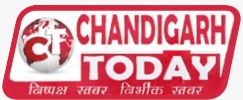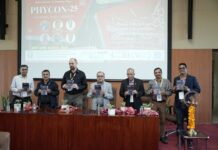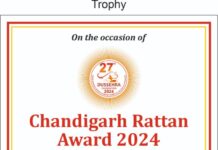Press Release 7(Data attached)
Chandigarh February 13, 2023
Increased congestion impact on hourly traffic emission over Delhi; Researchers identify the peak emissions hours in Delhi at a high spatial resolution
In order to evaluate the impact of congestion on the level of traffic emission during the round the clock for 24 hours, a team researcher from Panjab University Chandigarh, Post Graduate Institute of Medical Education and Research (PGIMER) Chandigarh, IIT Delhi, IIT (ISM) Dhanbad and National Atmospheric Research Laboratory (NARL) conducted a study over megacity Delhi.
Road traffic congestion has a profound impact on both the environment and daily life. On the other side, it increases emissions as vehicles are forced to idle or move at a slow pace, which contributes to decreased air quality. This can have serious health implications, particularly for individuals with respiratory conditions.
One of the primary reasons for increased traffic congestion in Delhi is the rapid growth of the city’s population. With more people living and working in the area, the number of vehicles on the roads has increased, leading to increased congestion and longer commute times.
Another reason for the increase in traffic congestion in Delhi is the lack of infrastructure development. Despite the growing population, the city’s transportation infrastructure has not kept pace, leading to limited road capacity and bottlenecks at key intersections. This has resulted in increased congestion, particularly during peak hours, and has significantly impacted the daily lives of residents and commuters.
The study uses TRIPP (Transportation Research and Injury Prevention Programme) classified traffic dataset of IIT Delhi to estimate the hourly emissions of toxic pollutants at fine grid resolution to identify the hotspot of traffic emission over Delhi for every hour of the day. The study finds that the morning and evening rush hours have the higher emissions, while the evening rush hour has the highest emissions. During these hours, the collective impact of traffic jams and resulting lower vehicle speed causes higher traffic-related emissions. It is also mentioned that in inner Delhi, with higher road density and measure business hubs, the level of congestion is higher, reducing vehicle speed and elevating the emission level. The first author of the paper, Akash Biswal, is a Ph.D. student at Panajb University working under the supervision of Dr. Suman Mor.
Dr. Suman Mor, Associate Professor, Department of Environment Studies, Panjab University, highlighted that passenger vehicle emission share is higher during 08:00- 20:00 hours, while the goods vehicle share is higher during the night-time. Dr. Mor also stated that night-time free movement of trucks and other goods vehicles leads to the elevated emission share during the off-peak night-time hours. She also added that among different road classes, multilane (3-lane, 4-lane, 6-lane) roads were identified with higher emission intensity because of heavy traffic volume.
According to Professor Ravindra Khaiwal, “This study provides a comprehensive understanding of the hourly traffic emission patterns in Delhi, which can be used to inform policy decisions to reduce the environmental impact of traffic. He added that the results of our study can serve as a valuable reference for other cities facing similar challenges and can be used to inform the development of effective policies to address traffic emissions and improve air quality”.
The study’s authors also highlighted that this study provides very detailed spatiotemporal emission maps for megacity Delhi, which can be used in air quality models to develop suitable strategies to reduce traffic-related pollution. Moreover, the developed methodology is a step forward in developing real-time emissions with the growing availability of real-time traffic data.
The study was recently published in Earth System Science Data, a reputed peer-reviewed international journal by Copernicus publisher. This study would be helpful and could be used by policymakers for various traffic-related policy evaluations.
Article Title: Spatially resolved hourly traffic emission over megacity Delhi using advanced traffic flow data.
Authors: Akash Biswal, Vikas Singh, Leeza Malik, Geetam Tiwari, Khaiwal Ravindra, and Suman Mor
Journal: Earth System Science Data
Impact Factor: 11.82
Publisher: Copernicus Publications
Weblink to download the full paper: https://essd.copernicus.org/articles/15/661/2023/












